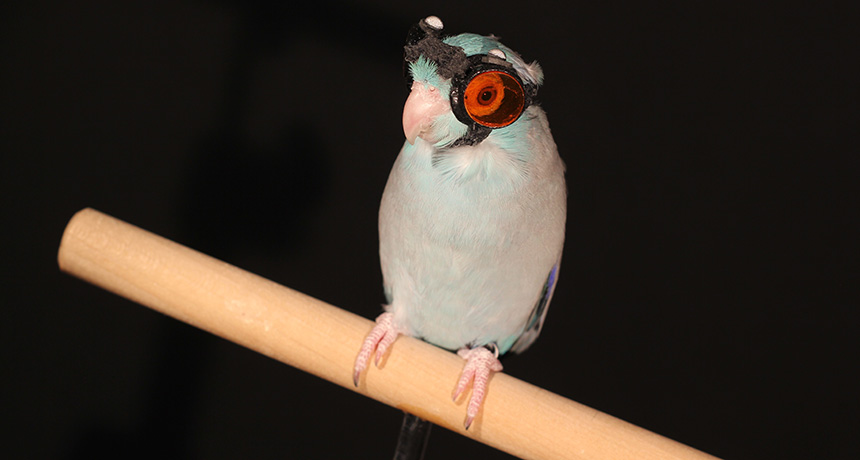Bird plus goggles equals new insight into flight physics

A bird in laser goggles has helped scientists discover a new phenomenon in the physics of flight.
Swirling vortices appear in the flow of air that follows a bird’s wingbeat. But for slowly flying birds, these vortices were unexpectedly short-lived, researchers from Stanford University report December 6 in Bioinspiration and Biomimetics. The results could help scientists better understand how animals fly, and could be important for designing flying robots (SN: 2/7/15, p. 18).
To study the complex air currents produced by birds’ flapping wings, the researchers trained a Pacific parrotlet, a small species of parrot, to fly through laser light — with the appropriate eye protection, of course. Study coauthor Eric Gutierrez, who recently graduated from Stanford, built tiny, 3-D‒printed laser goggles for the bird, named Obi.
Gutierrez and colleagues tracked the air currents left in Obi’s wake by spraying a fine liquid mist in the air, and illuminating it with a laser spread out into a two-dimensional sheet. High-speed cameras recorded the action at 1,000 frames per second.
The vortex produced by the bird “explosively breaks up,” says mechanical engineer David Lentink, a coauthor of the study. “The flow becomes very complex, much more turbulent.” Comparing three standard methods for calculating the lift produced by flapping wings showed that predictions didn’t match reality, thanks to the unexpected vortex breakup.